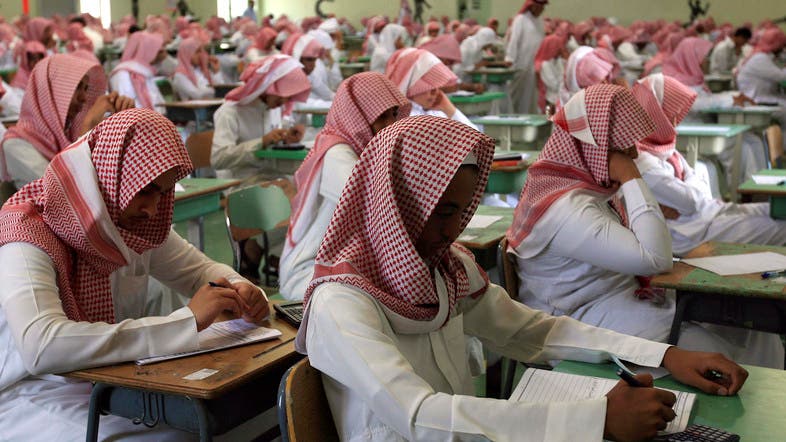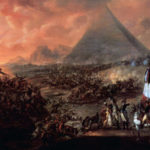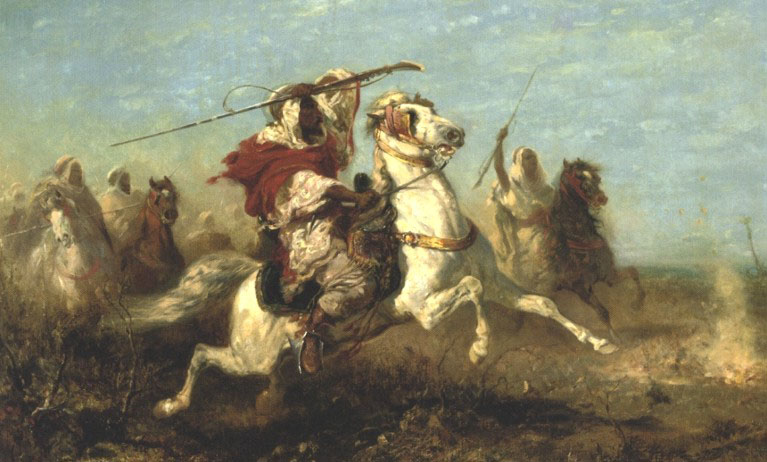
The curricula for teaching Islamic history in the general education classes have the greatest impact in shaping the student’s mentality, shaping his conscience, directing his behavior, and developing his awareness of the past and consequently his perception of the present and the future. It also makes the greatest contribution in shaping the student's view of other peoples and the extent of his acceptance and tolerance of others.
IN ANOTHER RESPECT history plays a prominent role in strengthening the student’s sense of national belonging vis-à-vis his society, his state and his ruling political system. Hence the importance of constructing curricula on historical studies that are based on balanced and objective visions, by featuring both the positive and negative aspects of the acts and achievements of historical figures. The aim of this is to inculcate in the student a critical intellectual mindset and train him in the application of free critical thinking skills, starting from the early preparatory stage. The formulation of Islamic history curricula is actually too dangerous to leave to historians. Rather, all those who are concerned with shaping the student’s personality are to participate in this exercise. Nevertheless, what is happening today is that in most Arab countries the teaching of Islamic history through each of the stages of public education is carried out for the most part according to two dominating approaches:
1.The focus on political history – that is, the history of rulers, kings and leaders and their wars, conquests and victories, and on heroism and glory, with a corresponding absence of social history and with the role of the Arab and Islamic peoples in making these transformations, achievements and victories marginalized. Our history has become the history of kings and leaders, not the history of people who lived and overcame social and environmental challenges over many historical periods.
2.The focus on conspiracies and intrigues that the enemies have perpetrated and are perpetrating in order to cause sedition, strife and division, and to fuel religious sectarianism among Muslims. The ultimate aim of this ‘conspiracy’ being to shatter their unity, incite them against each other, corrupt each other, undermine their state, and weaken their faith. It aims to destroy their identity in preparation for occupying their homelands, seizing their resources, weakening their religion and controlling their forces and capacities.
The student of Islamic history thus maintains two distorted perceptions:
a perception that this long history is nothing but the history of caliphs and leaders and their continuous wars with rapacious enemies right up to our modern age;
a perception that our glorious history is just a long series of intrigues, plots and conspiracies that the enemies carry out to target the Arab countries so as to chop them up into mini-states that are easy to control, and to seize their resources.
One of the results of teaching history according to these two approaches is the creation of a general Arab mentality that strongly pre-disposed to believe the illusions of a global conspiracy against Islam and Muslims.
The formulation of Islamic history curricula is too dangerous to leave to historians
This commonly shared mentality of stereotypes, a psychology that is haunted by illusions of plots and intrigues, are simply the outgrowth of unbalanced historical approaches that are portraying the world and its history as foreign a conspiracy against the Arabs. It has firmly embedded in the societal structure a strong tendency to believe any religious preacher or political activist who is seeking stardom and fame, or any head of a state in crisis who is failing to solve the problems of his country.
These curricula have spawned a generalized mentality with the following prominent features and characteristics:
1.The sacralisation of political and Islamic personalities and symbols as the creators of events and the protectors of homelands and sanctities. One should not be surprised at the masses’ fondness for these symbols, but these have bequeathed a fragile cultural structure for our societies, one that cannot protect them against tyranny, violence, corruption and religious extremism. When such societies entrust their hopes to a political or religious figure, they are gambling with their future since they are entrusting it to the will of one individual, popular hero who happens to enjoy charisma among the masses. This represents the biggest obstacle to the renaissance and progress of our societies. And this is not limited to historical figures of the present or from the past but has a future dimension to it in the doctrine of the ‘awaited Mahdī’ who is to emerge at the End of Time to fill the earth with justice. There is thus no consolation to be sought here for Arab peoples whose will has been robbed in the past, present or in the future!
2. The glorification and exaggerated magnification of the self while belittling the historical rights of others. In teaching history, we stuff the student’s mind with glories, exploits, and the preference of his nation over all other peoples, through a process of exaggeration, selective focus, and removing from them any consciousness of our historical failings. For this student it is thus a natural thing to grow replete with an extremist nationalist or racist and religious conception vis-à-vis other peoples. What other purpose is there to vaunting the expansion of the Islamic empire during the reign of Hārūn al-Rashīd and lauding his saying “Rain where you want, and tax will come to me from there”. Have we ever asked how much blood of other peoples was shed to secure this tax for the ʽAbbāsid sultan?
3.The exclusion of the other who differs in faith, or denomination or creed or nationality, on the assumption that he wishes evil against us or conspires against us and that therefore no good will should ever be expected from him, or because he is doubting the faith and therefore misguided, an ‘innovator’, or outright perverted. Anyone who peruses historical works of heresiography emerges with a closed, vehement mindset, that there is a single ‘correct’ belief whose adherents will alone gain paradise while the other sects of Islam are errant and their adherents destined for Hellfire. Belief in this idea spawns a fanatical mentality that easily slides towards extremism and violence.

Suggested Reading
Diagnosing the Arab Muslim Mentality as a Precursor to Reform
4.The compliance with societal misogyny – the active marginalization of women from public life and withdrawal of confidence of them in positions of leadership. Throughout the history of Arab societies women have been perceived as deficient, lacking their own will and created merely to serve and entertain men, and raise their children.
5.Blaming the other and holding them responsible for the deterioration of our conditions both in the past and present. By this means we ascribe all the negative features in our history to hidden enemies – such as holding the Jew ‘Abdullāh bin Saba’ to be responsible for the Great Sedition,[1] based on the narration of the historian Sayf ibn ‘Umar al-Tamīmī, who opined that Ibn Saba’ was able, within the space of two years, to turn the major cities of the time against the Caliph ‘Uthmān, influence some of the senior Companions against him, and manage to disrupt the peace between ‘Alī and ‘Ā’isha at the Battle of the Camel, in the knowledge that the “sword” of this decision was unanimously agreed through the work of fabricating, deceitful hadith scholars.
The Arab mind is simply the outcome of this history, or more precisely, the outcome and product of the approach that is being followed actively or passively, in the teaching of this history. The mentalities of nations are become open-minded or close-minded according to the historical curriculum that they adopt.
[1] The Great Sedition, or ‘First Fitna’ (656–661 AD) broke out with the killing of ‘Uthmān and was the first civil war in the Islamic community. It led to the overthrow of the Rashidūn Caliphate and the establishment of the Umayyad Caliphate. ‘Abdullāh bin Saba’ was a Yemenite Jew who converted to Islam during Uthman’s reign and was a partisan for the cause of ‘Alī. Modern historians dispute the traditional account that ‘Abdullāh bin Saba’ was involved in the assassination of ‘Uthmān, or even that he was a Jew.

